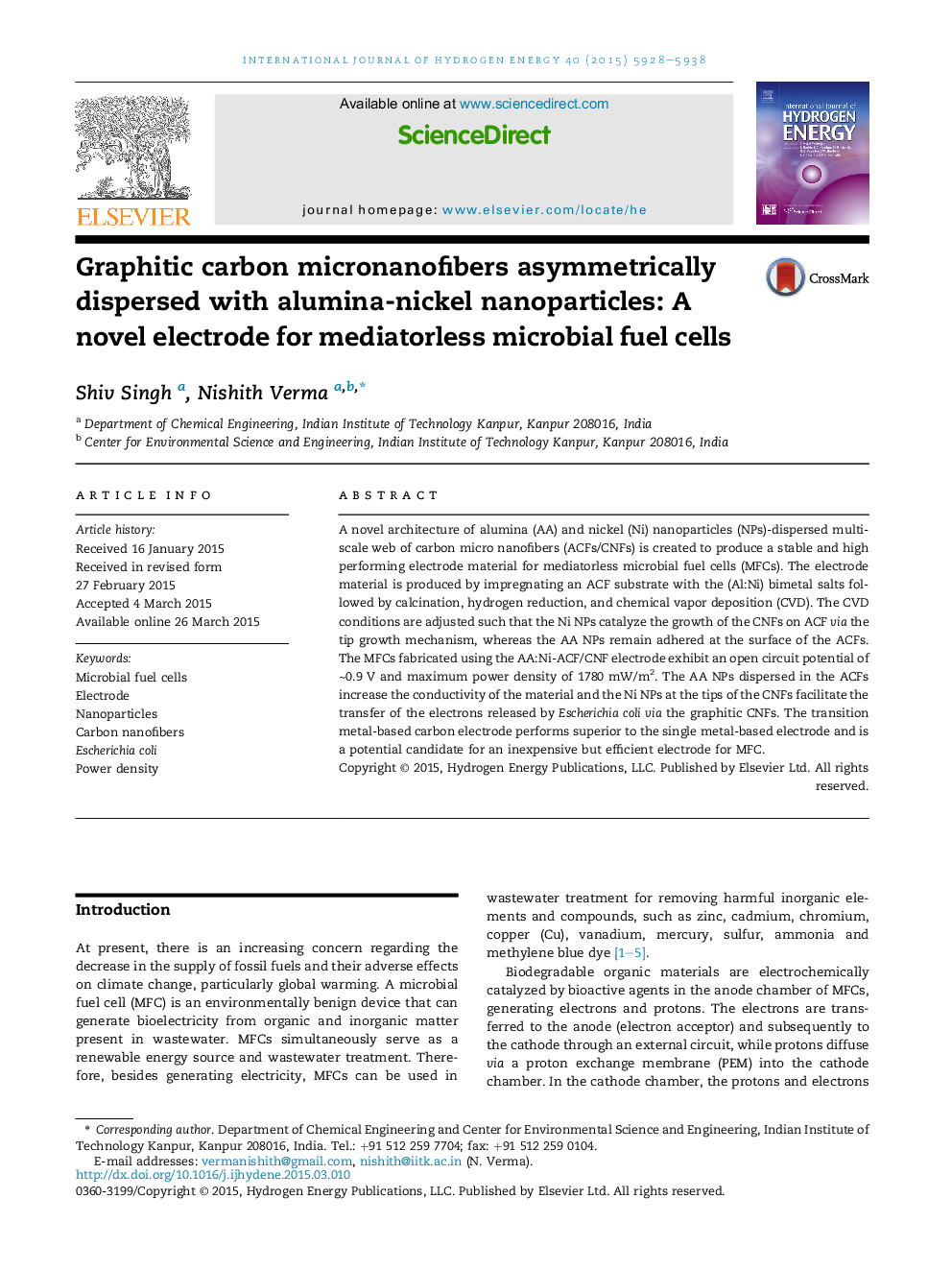| Article ID | Journal | Published Year | Pages | File Type |
|---|---|---|---|---|
| 1275438 | International Journal of Hydrogen Energy | 2015 | 11 Pages |
•Synthesis of AA/Ni NP-dispersed ACF/CNF-based electrodes for MFCs.•High OCP (0.9 V) and power density (∼1800 mW/m2) generated using the MFCs.•Increase in the conductivity of the prepared materials, attributed to the AA NPs.•The Ni NPs- and CNFs-facilitated electrons transfer from Escherichia coli to the anode.
A novel architecture of alumina (AA) and nickel (Ni) nanoparticles (NPs)-dispersed multiscale web of carbon micro nanofibers (ACFs/CNFs) is created to produce a stable and high performing electrode material for mediatorless microbial fuel cells (MFCs). The electrode material is produced by impregnating an ACF substrate with the (Al:Ni) bimetal salts followed by calcination, hydrogen reduction, and chemical vapor deposition (CVD). The CVD conditions are adjusted such that the Ni NPs catalyze the growth of the CNFs on ACF via the tip growth mechanism, whereas the AA NPs remain adhered at the surface of the ACFs. The MFCs fabricated using the AA:Ni-ACF/CNF electrode exhibit an open circuit potential of ∼0.9 V and maximum power density of 1780 mW/m2. The AA NPs dispersed in the ACFs increase the conductivity of the material and the Ni NPs at the tips of the CNFs facilitate the transfer of the electrons released by Escherichia coli via the graphitic CNFs. The transition metal-based carbon electrode performs superior to the single metal-based electrode and is a potential candidate for an inexpensive but efficient electrode for MFC.
Graphical abstractFigure optionsDownload full-size imageDownload as PowerPoint slide
